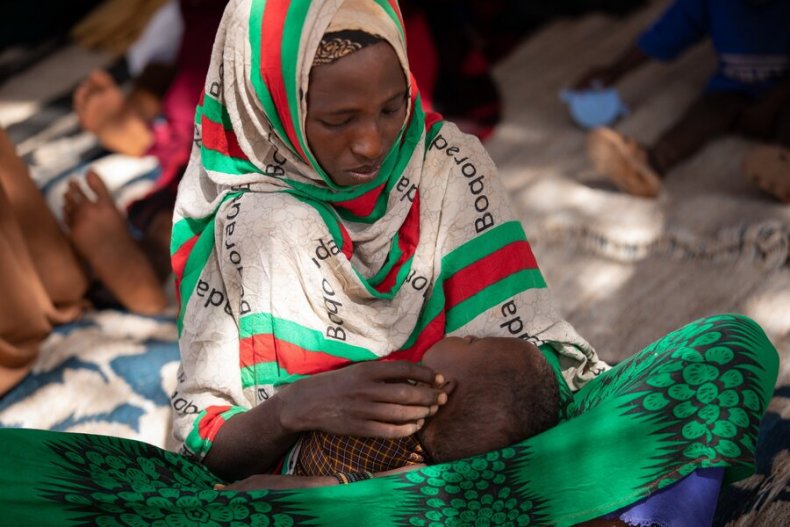The global hunger crisis is so severe that one person is starving to death every four seconds, according to humanitarian relief organizations. Hunger is the biggest crisis facing the globe today and we must all act now to save lives.
The Horn of Africa continues to suffer from a prolonged drought, caused by climate change. Families have lost everything as they cannot grow food without rain. Their livestock has died from extreme heat. Millions are desperately searching for food each day.
The U.N. World Food Program (WFP) estimated 26 million people in Somalia, Ethiopia and Kenya are suffering from severe hunger due to drought. Famine is likely to be declared in parts of Somalia.
“Families here have one plea for the rest of the world. Please don’t look away. Please help,” said Malene Jensen of UNICEF.
The world can do more to help concerned mothers in nutrition centers who are watching their children die from hunger. Relief operations in Somalia and other countries have lacked funding all year.
Save the Children’s country director in Somalia, Mohamud Hassan, warned, “Children are already dying. The services set up to combat malnutrition and hunger in Somalia are simply not enough to meet the huge and increasing levels of need.”
The hunger crisis goes far beyond Somalia and East Africa. The WFP said there are 345 million people worldwide experiencing acute hunger. That horrifying number has doubled since 2019. In war-torn Yemen, South Sudan, Afghanistan, and the Democratic Republic of the Congo there are alarming rates of hunger. The war in Ukraine displaced millions of hungry people and led to increased global food prices.

“We urgently need to get help to those in grave danger of starvation in Somalia and the world’s other hunger hotspots,” said David Beasley, executive director of WFP.
War, climate change and the pandemic have all created the biggest hunger crisis since the end of World War II. At that time America led a global effort to stop famine. The U.S. had to dramatically increase its hunger relief efforts after World War II to save lives. We must do so again.
“While we appreciate and acknowledge the generosity of the U.S. government in response to growing humanitarian needs, more action is clearly necessary,” said Bill O’Keefe of Catholic Relief Services.
For small children, deadly malnutrition can set in quickly. They need foods like Plumpy’Nut, an enriched peanut paste, to survive. If there is not enough funding or political will to bring food to the hungry, children will continue to lose their lives. With increased funding we could support all infant nutrition and school meals programs that save children’s lives.

Donors need to step up with emergency aid and also longer-term funding to prevent famine. Everyone can do more, whether through holding fundraisers for hunger relief or writing letters to Congress urging more funding for global food aid.
Feeding the hungry must become a priority for everyone. Resources exist to prevent famine. The world just needs the political will and the heart to save lives.
By William Lambers
 William Lambers is an author who partnered with the U.N. World Food Program (WFP) on the book Ending World Hunger. His writings have been published by The Washington Post, History News Network, Cleveland’s The Plain Dealer and many other news outlets. Lambers recently volunteered to write the Hunger Heroes section of WFP’s online learning game Freerice.
William Lambers is an author who partnered with the U.N. World Food Program (WFP) on the book Ending World Hunger. His writings have been published by The Washington Post, History News Network, Cleveland’s The Plain Dealer and many other news outlets. Lambers recently volunteered to write the Hunger Heroes section of WFP’s online learning game Freerice.
Newsweek






























